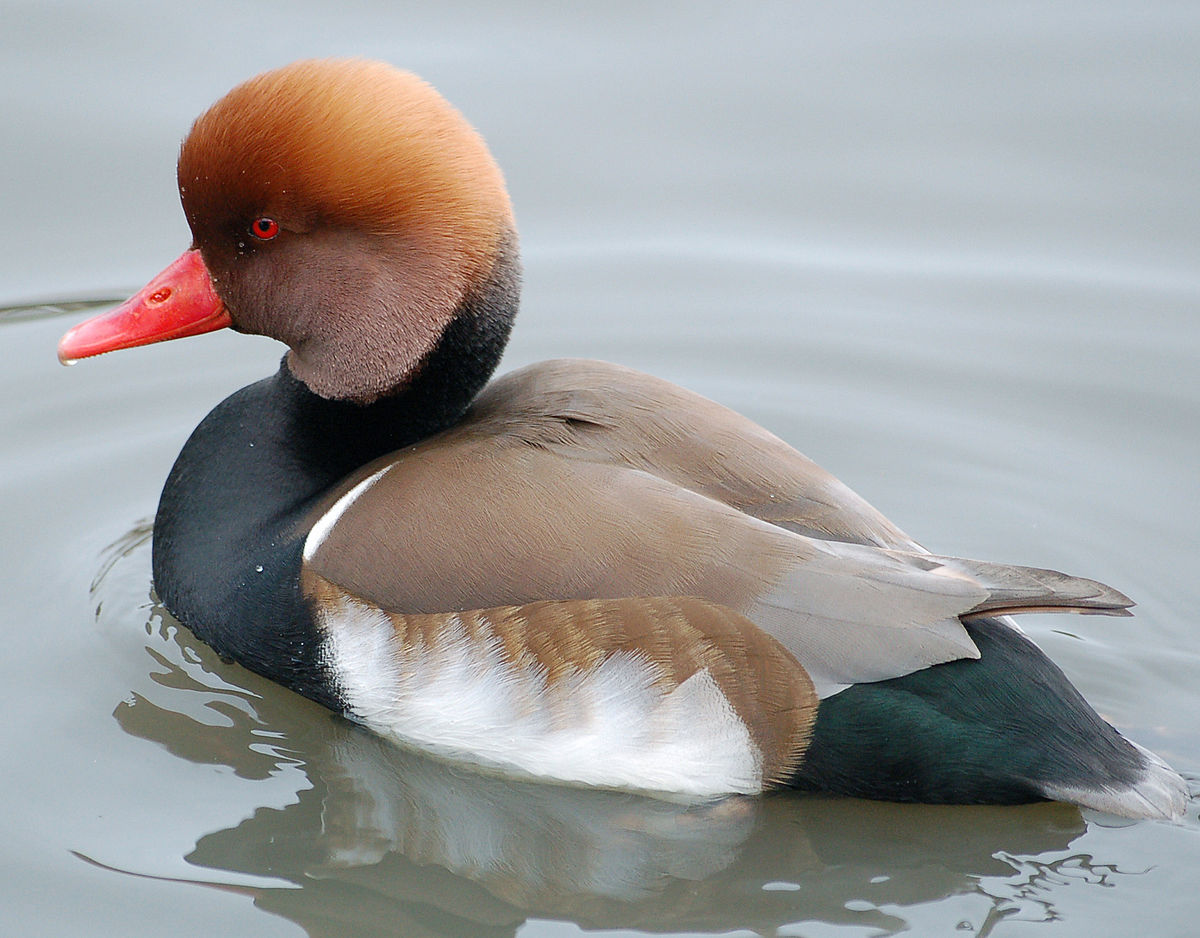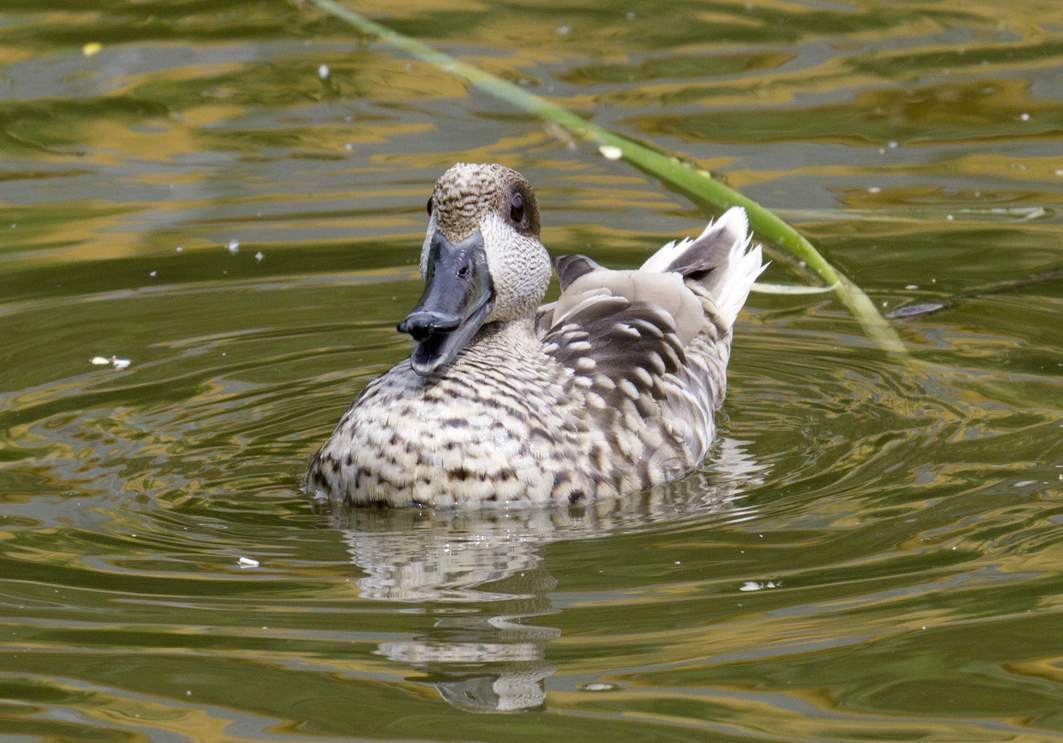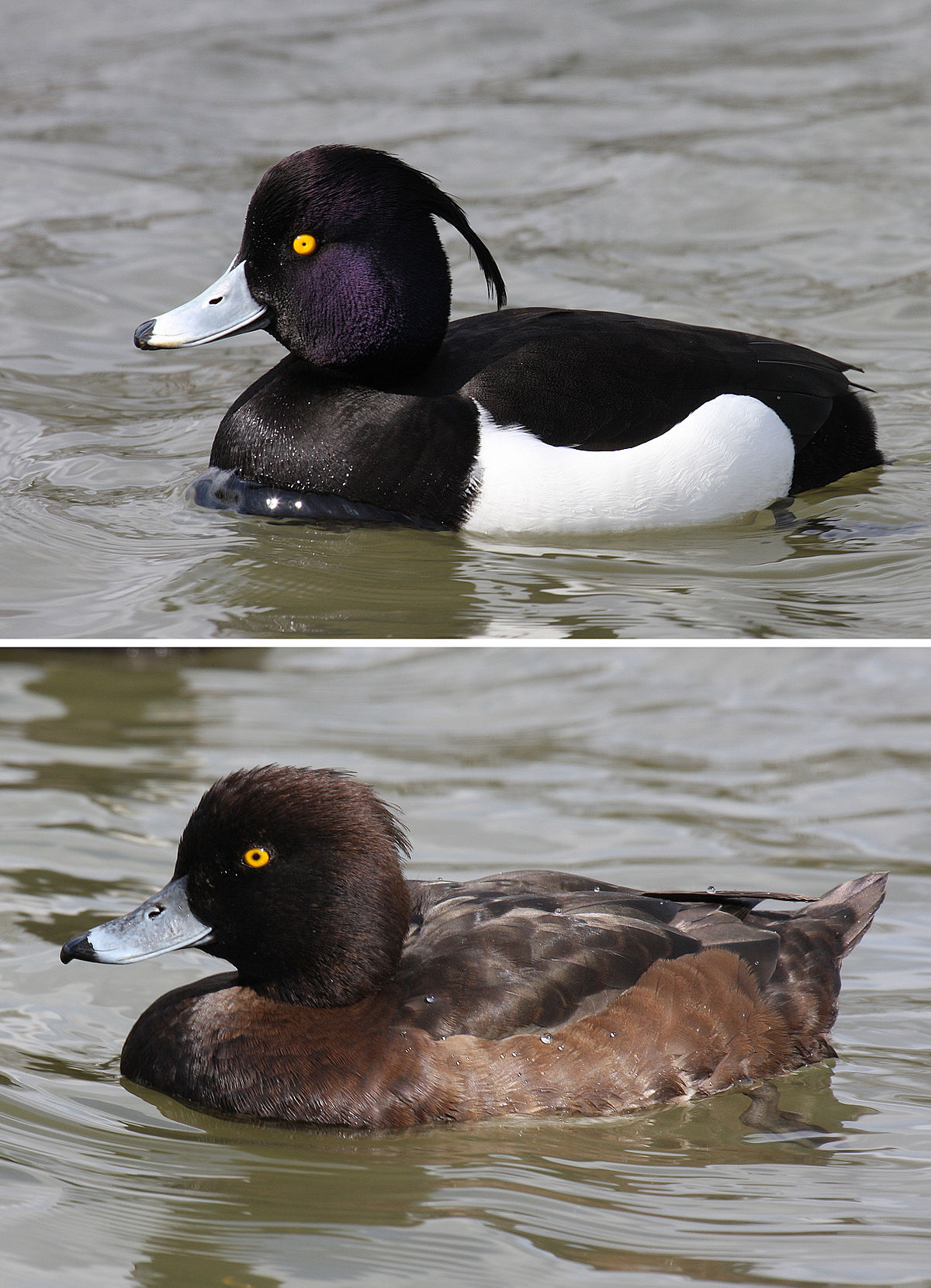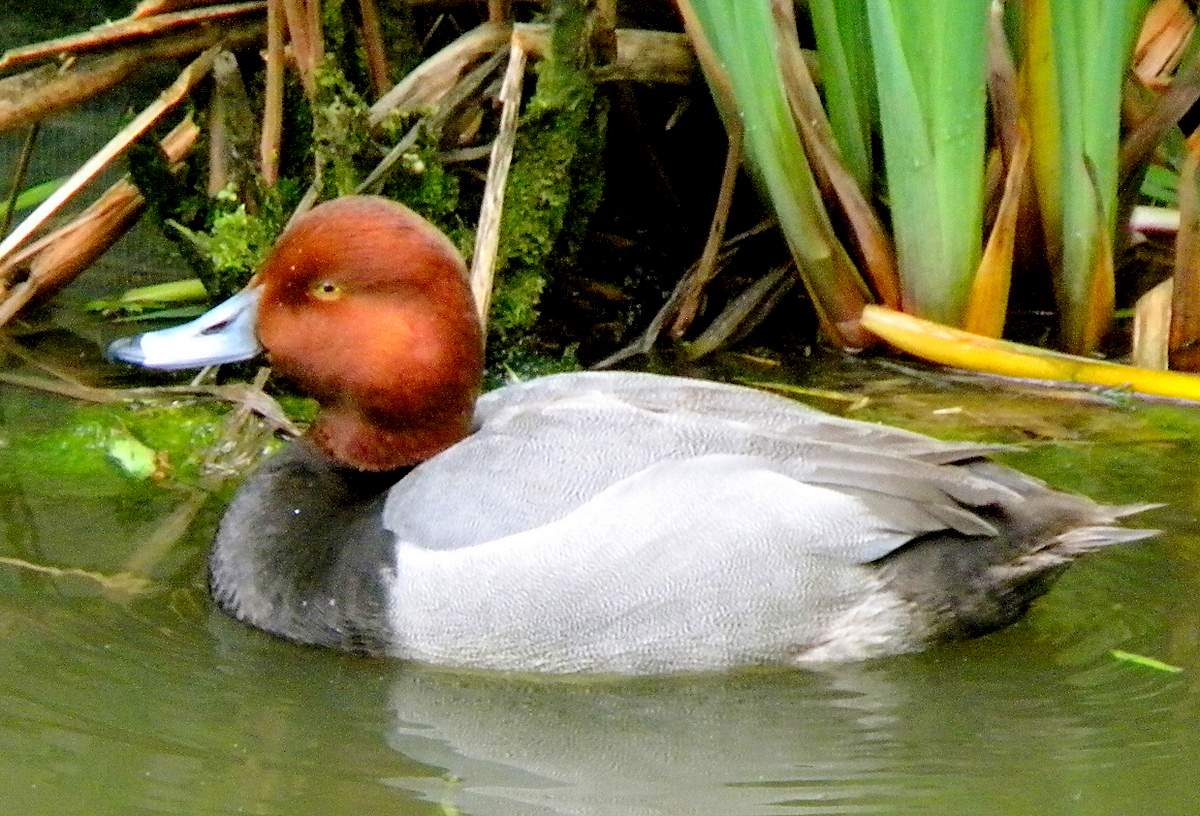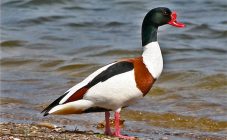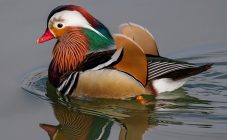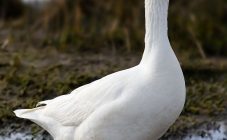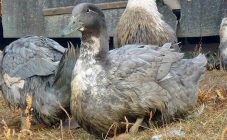Content:
In essence, the duck duck belongs to the waterfowl of the Duck family, but differs from its relatives not only in appearance, but also in habits. Their main feature is the ability to descend to great depths in search of food for themselves and ducklings. The name duck duck is collective, since each species has its own characteristics and habits.
General information
Different types of diving ducks have their own differences and common features. This is a medium-sized bird - the weight of adults rarely exceeds 1.5 kg. Unlike other representatives of ducks, dives, when landing, lower their tail into the water, and also have a small squat appearance. Another characteristic feature of diving is a rather large head, which is located on a shortened neck. Birds spend most of their time on the water, flying in a straight line, in short sections. When diving, and this is how they get their food, they sink to a depth of 60 m and can be without air during the dive for about 3 minutes. It is because of this feature that they began to be called dives.
Diving ducks feed on what they can get from the bottom, since they rarely appear on land. Food can be completely varied, ranging from algae to shellfish and fish. Still, they prefer animal food, which is why the meat has such a specific unpleasant aftertaste. They hunt diving more often because of the value of the skin. The scope of her and the pen is different.
By their nature, birds are monogamous, but pairs do not persist for a long time, since the drake disappears after fertilization. Their nests are located on land or in tree hollows.
Species and subspecies of birds
In nature, there are several species of this bird that are found on Russian rivers. Other representatives are very rare and live in exotic countries.
In general, all diving ducks can be divided into 4 subspecies:
- marble teals;
- diving;
- red-headed ducks;
- blacken.
The description of each of the subspecies has its own distinctive features and general characteristics.
Marble teal
Small birds weighing less than 0.6 kg. The color of different sexes is the same: brownish-gray feather with light inserts. The main habitat of the marble teal is the European part of Russia and many Asian countries. During swimming, birds have a slightly raised tail. The peculiarity of these birds is that they dive deeply.
Diving
It is not difficult to recognize a duck of this variety: a small body with a very short neck, on which a rather large head is located. The male is slightly larger than the female, but the average weight of the bird does not exceed 1 kg. Male individuals are slightly brighter than females, they have a beautiful head color, a lightened chest, the body sometimes borders on black, females are painted gray. The habitat is the forest-steppe of Russia, birds get their food only by diving.
There are several subspecies of dives:
- red-billed or red-nosed duck;
- red-eyed dive;
- pampas dive.
Cerneti
The bird features a dense small body, a short neck with a large head and a gray beak. Paws are small, gray, with membranes. On each wing of the duke there is a light stripe, which distinguishes this particular subspecies among diving. Duck spends almost all of its time on the water surface.
Pink-headed duck
Officially, the red-headed, or pink-headed, duck is considered an extinct species, last seen only in 1945. But bird watchers believe that they can still inhabit the most abandoned places, but not on the territory of Russia. They stand out among the diving ones with their bright beautiful plumage. Males have a beautiful head with a long beak and a pinkish neck. In females, the beak is not colored. The wings are also pink and the tips of the feathers are white.
Raising wild ducks at home
Everyone has long been accustomed to seeing domesticated bird breeds in private farmsteads, but many farmers are well aware that raising wild duck at home is much easier than it might seem at first glance. It is very important to provide them with living conditions that are as close as possible to natural ones, as well as an abundance of food, and the birds will not want to leave comfortable conditions. The great advantages of breeding wild species are their hardiness and good adaptation to weather conditions.
Growing diving ducks at home is not particularly in demand, since the meat of this bird is not very tasty. And the maximum weight of each individual is not very large. Most often this breed is grown for decorative purposes. They will decorate any summer cottage if they settle on the territory of the reservoir. So that the bird does not go to another place, it is important for the owner to provide all conditions for a comfortable existence, better than in natural nature.
Content principles
Duck duck, like other representatives of duck, when grown at home will not be too demanding on food. To breed offspring, she does not need an expensive incubator, the organization of additional heating. Ducks often feel great in a small brick house or carriage located near a pond. For protection from predators, you can additionally fence off their habitat with a net.
In the warm season, keeping diving ducks will not raise any questions at all, since the most important thing for them is the presence of a reservoir, where they will spend their free time and get food.
It is important for a duck owner to control the following:
- availability of clean drinking water;
- food, which in summer can consist of greenery and small fish;
- the presence of sand, without which wild breeds simply cannot do;
- organize a canopy under which birds can hide in the rain or too sunny weather.
With the onset of warm days, females begin to independently create nests. After they are ready, the ducks begin to actively lay and sit down to incubate their eggs.
Feeding features
The situation is similar with the feeding of dives that will live at home. For full growth and development, it is important to try to replicate the diet of a bird in the wild.
Food must constantly contain:
- algae and green vegetation;
- roots and seeds of aquatic plants;
- small amphibians, tadpoles, leeches;
- molluscs and crustaceans;
- fry;
- larvae of mosquitoes and other insects;
- small fish and more.
But this does not mean that there should be nothing else in the diet of a bird.
You can diversify the diet of ducks at home:
- plant tubers;
- buckwheat, millet, barley and so on.
Still, it is impossible to feed birds accustomed to living in the wild with anything, as they can earn serious problems of the digestive tract. Also, proper nutrition will help ducks be able to lay at home. To simplify the process of choosing a diet, you can buy special feed mixtures at pet stores.
Duck diseases and their treatment
When diseases appear in a herd of ducks, difficult times come for everyone. But if you provide your feathered pets with proper care and nutrition, then the likelihood of meeting them decreases.
The most common diseases that most often occur in ducks and significantly harm them include:
- paratyphoid;
- pasteurellosis;
- hepatitis.
Non-communicable diseases
When breeding birds, such diseases are not too dangerous for humans, they are not transmitted between individuals and, with the right approach, are very quickly eliminated. Among the most common are: avitaminosis A or E, Urovskaya disease, cuticculitis, omphalitis. A qualified specialist can always help in the treatment of such problems.
Infectious diseases
These are the most dangerous diseases, as they are transmitted from one bird to another, and are very dangerous for humans:
- Coccidiosis. This is a disease that cannot be cured; a bird can become infected, for example, from insects. The main symptoms are: loss of appetite, lethargy, loose stools, brown stool interspersed with blood, apathy.
- Tuberculosis. After infection, it appears only after a month. The main signs will be swollen joints, an inflamed goiter and mucous membrane, eczema begins to appear on the skin, the birds turn over on their back. Such a disease is also not amenable to treatment. But birds can be used for meat.
- Viral hepatitis. A very dangerous disease that can mow down all young growth. When damaged, the liver begins to decompose, and the bird simply dies. The first signs will be a lethargic state, the appearance of seizures, lack of mobility and appetite. Treatment of such a disease is impractical, since young birds need to be vaccinated for preventive purposes.
- Sinusitis. Treatment of such a disease is advisable in the initial stages, but the disease progresses very quickly. The first and main symptom is the difficulty in breathing of the bird, then there is frequent sneezing, sometimes convulsions, swelling of the eyelids appear.
- Runny nose. The disease very often appears in young individuals, its treatment should be carried out at the first sign, since with progression it is very difficult to get rid of the problem. If a problem is found, the nose and eyes of the bird should be dripped with a weak solution of potassium permanganate.
Breeding wild ducks, in particular diving breeds, will not cause major complications. Such beautiful decorative birds will decorate the pond on the site. By nature, diving ducks are friendly and trusting. If they are satisfied with organized conditions, they will not want to leave the reservoir near a person's home.
